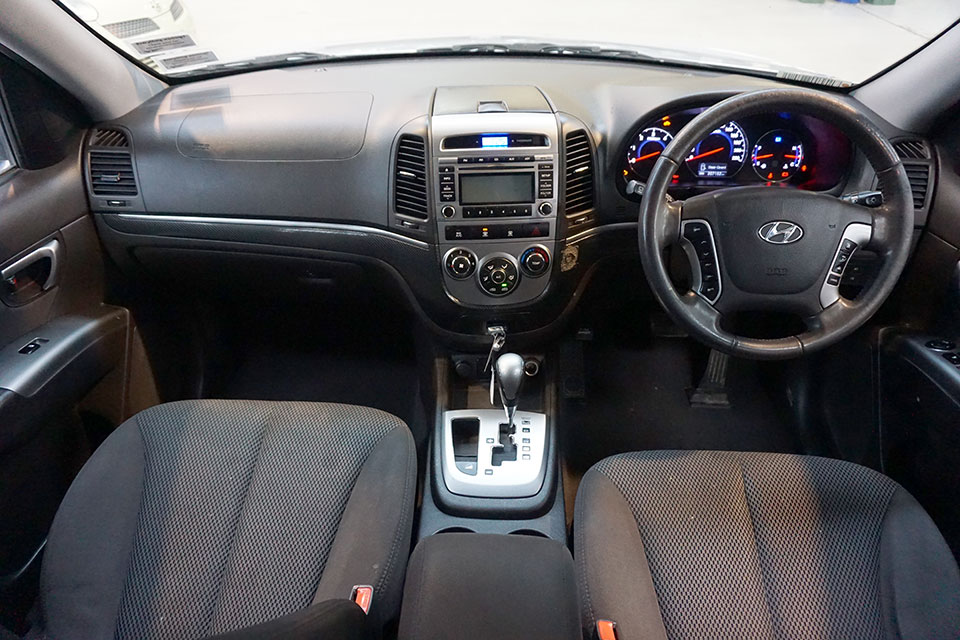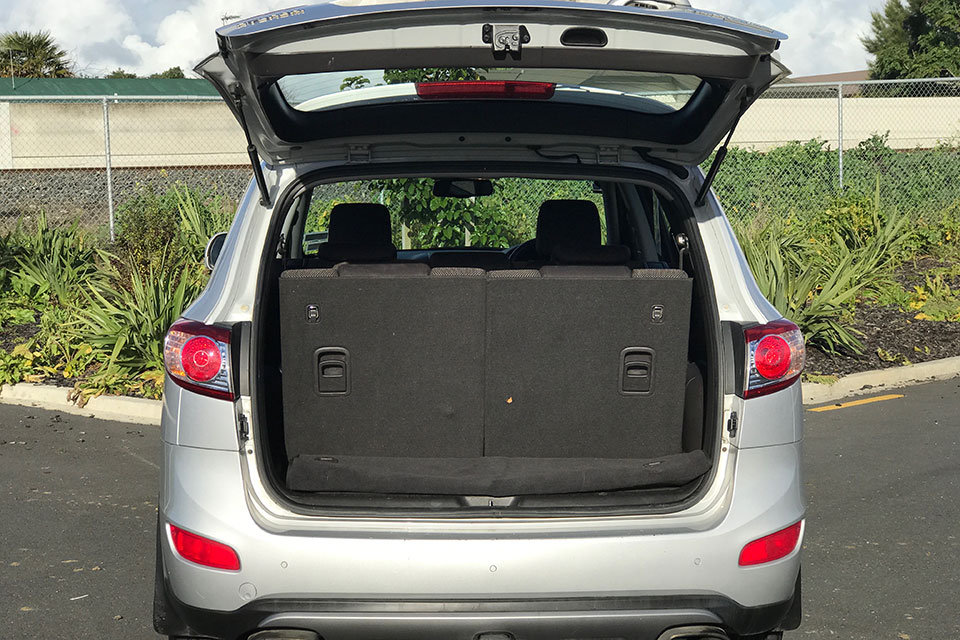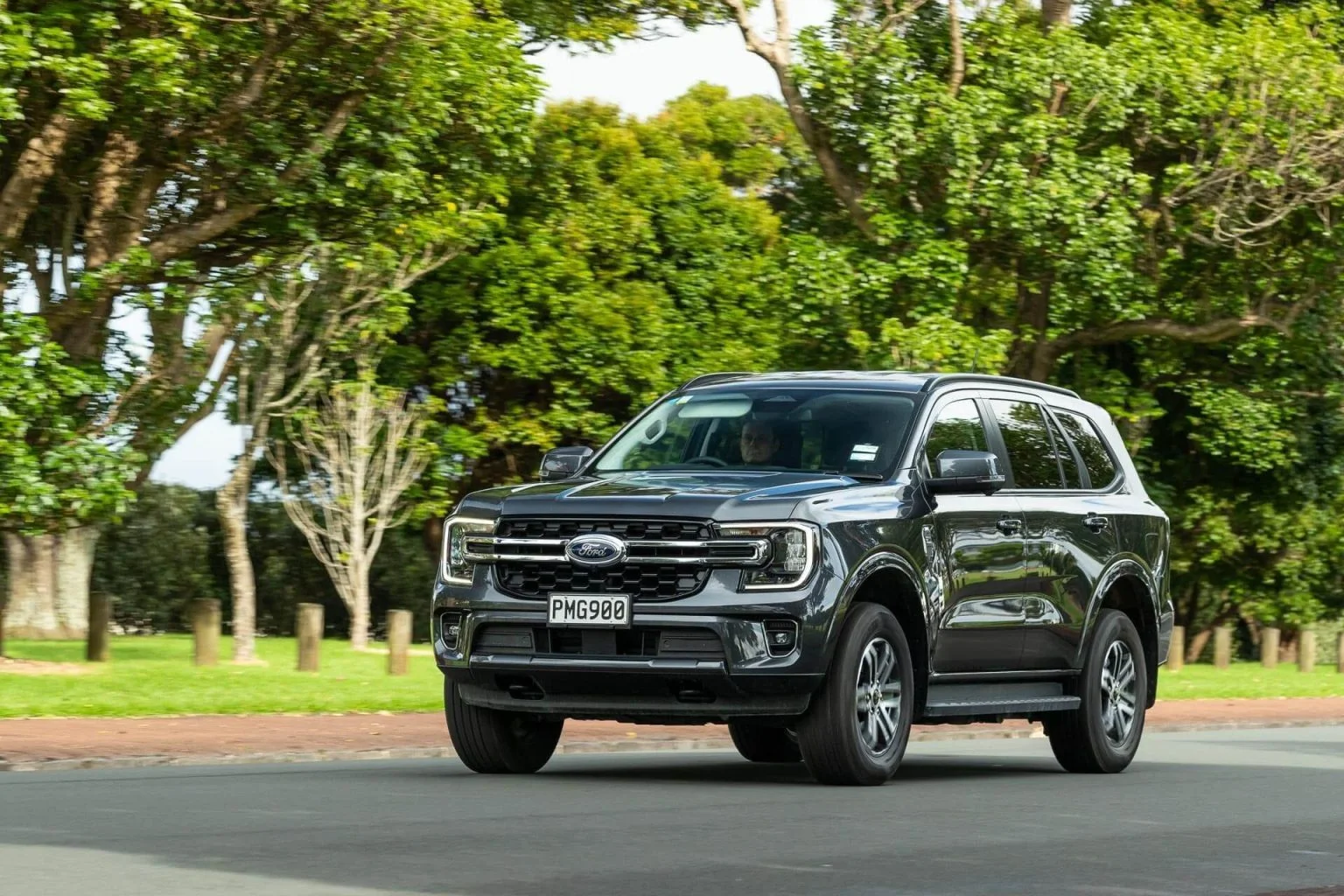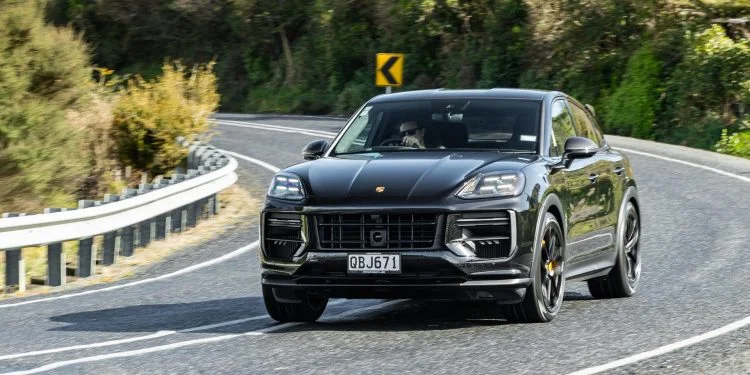Hyundai Santa Fe 2006-2012 used car review
The Hyundai Santa Fe is a solidly built family SUV with excellent performance from its turbo-diesel engine.

The Hyundai Santa Fe is a solidly built family SUV with excellent performance from its turbo-diesel engine. Even with seven seats, it is only practical for a family of five.
The Santa Fe was Hyundai’s first SUV model. The first generation was a small SUV; the second was bigger and more family-focused, with seating for seven. From its launch in 2006, it was a big success for the brand and became popular with both private and fleet buyers. It is a close cousin to the Kia Sorento with which it shares many components.
Inside and out
The Santa Fe has a very soft, rounded look. Front and rear lights are rounded in shape and set smoothly into the surface of the car. Alloy wheels are standard - 17-inch on the standard model and 18-inch on the Elite model - although larger aftermarket wheels are very common. Elites also get front fog lights.
Our review vehicle’s interior is finished in a brown colour which makes it look a little drab. Elite models get a sharper-looking black colour scheme. The dash and door plastics feel hard and a little cheap, though they stand up to use well. The large, easy-to-read gauges, clock and stereo are lit up in blue rather than the usual white or red. Controls for the CD player stereo and manual air-conditioning are set high in the centre of the dash and are angled towards the driver for easy reach.
The front seats are very comfortable and feature two contrasting panels in the fabric upholstery. After 200,000km, we were very impressed with how it had resisted wear, though it showed some staining. The driver's seat is electrically adjustable. The second row is also very comfortable and quite spacious with room for three smaller adults. The centre hump in the floor is small, giving the centre passenger more space. The outer seat tumbles forward to provide access to the third row which only kids will find comfortable. The seat itself is large, yet legroom is very poor.
With the third row in place there is almost no boot space - at just 70 litres an umbrella and a couple of small soft bags are all you are likely to fit. Use the car as a five-seater and space expands to a healthy 774 litres, enough for four large suitcases and two small ones. The lack of storage space inside the vehicle is one reason the Santa Fe is seen more often than other models with a roof box fitted for additional storage.
On the road
Four engines were available in the Santa Fe. The cheapest models were fitted with a 2.4-litre four-cylinder petrol engine. A six-cylinder version was offered in 2.7-litre and later, 3.5-litre sizes. The most popular engine is the “R-Series” 2.2-litre four-cylinder turbocharged diesel engine, marketed as the most powerful in the class.
It is a very grunty unit for its size, producing 145kW and 436Nm, more than some 3-litre diesel engines. The only transmission available is a six-speed automatic and all but the 3.5-litre versions are all-wheel drive. The automatic is not the smoothest, although it is good at being in the right ratio and can be controlled manually.
The Santa Fe felt heavy and stable through the corners, with lots of grip. The steering is light though does not give much feedback from the road. The brakes are very effective. The all-wheel drive system is a little slow to react to the power provided by the engine. You can easily spin the front tyres away from the lights before the system catches up and moves more power to the rear wheels. That means you’ll need to get used to moderating how hard you hit the throttle on damp roads. Once underway, it’s not an issue.
The Santa Fe has a small amount of off-road ability but is first and foremost a road-focused vehicle. The centre differential can be locked for extra traction, and hill descent control will slow progress on steep, slippery hills. A skid plate offers some protection to the underside of the engine.
Rear parking sensors are standard and will be enough for most drivers. If you have small children and a tight driveway, you might want to consider fitting a camera. The Elite model gets one as standard, with the screen fitted inside the rear-vision mirror.
For a family car, the Santa Fe has a healthy tow rating. It can pull 700kg unbraked (a medium-size trailer) and 2,000kg braked (a medium-size trailer boat). The all-wheel drive system is also a help on slippery boat ramps.
Reliability
The Hyundai Santa Fe has an excellent record for reliability. There are few reports of issues with any of the engines. They use timing chains which do not require regular replacement.
One issue that can come up is a clogged exhaust gas recirculation valve on the diesel engine. It will show up as poor throttle response and can be sorted out during a service. It is not common, though should be kept in mind on a test drive.
This is very rare and the failure rate is no worse than in most other cars of this size. A rebuild will cost around $2,000.
We were told by a dealer this model was susceptible to mismatched front tyres, which can cause noises from the front end and pull in the steering.
The quality of the plastics in the cabin is not quite up to Japanese standards, an issue Hyundai addressed with the new model launched in late 2012.
Safety
The Hyundai Santa Fe (2009-2012) earned a five-star ANCAP safety rating. The list of safety equipment is lengthy, with front, side and curtain airbags, active headrests, anti-lock brakes, electronic brake force distribution, emergency brake assist and electronic stability control as standard.
All five rear seats feature shoulder seat belts, which offer more protection than the lap-only type. This generation Santa Fe does not have ISOFIX seat belt mounts, though it does have tether points on the back of the middle row.
Cost of ownership
Hyundai recommends servicing the Santa Fe every 12 months or 15,000km, whichever comes first. A dealer quoted $530 to do the work.
RightCar estimates that over 14,000km of driving a year, a Santa Fe will cost $2,370 a year in fuel and Road User Charges. The Santa Fe is relatively fuel efficient. The 70-litre fuel tank will cost $101.5 to fill and should take you 900km before the fuel light comes on.
A vehicle licence for the Santa Fe costs $155.69 a year, with the car in the cheapest ACC levy group for diesel vehicles.
Trade Me Insurance estimates insurance for a Sante Fe valued at $25,030 will cost $56.71* per month. This is $3 less than a Toyota Highlander.
Buyers’ guide
The Santa Fe is a favourite in the used market, attractive because of its reputation for reliability and affordability. Early models are available on Trade Me from as little as $7,800 with late-model, low-mileage cars priced up to $43,000. A large number of ex-fleet models with moderate mileages - between 80,000km and 140,000km - are now hitting the market. They make great buying at between $17,000 and $20,000.
Variants
The base Santa Fe is available with the four-cylinder engines in five or seven-seat versions, both with all-wheel drive. Four-cylinder Elite models are seven-seat only. The Elite six-cylinder is front-wheel drive only.
- Base - Features fabric upholstery, cruise control, reversing sensors, electric windows, iPod-compatible CD player stereo, manual air-conditioning, leather steering wheel and shifter, electric driver’s seat and alloy wheels.
- Elite - Adds full leather interior, heated front seats, heated steering wheel, electric passenger seat, reversing camera, climate control air-conditioning, fog lights and premium stereo system with subwoofer.
Timeline
- 2006 Launched globally
- 2010 Facelifted with new grille and lights. New alloy wheel designs added. Steering wheel audio controls made standard. Petrol engines produce more power
- 2012 Replaced by new model
Details
2012 Hyundai Santa Fe CRDi 7
$13,600 to $44,000 for models which have travelled 70,000 to 120,000km
2.2-litre four-cylinder turbocharged diesel, 145kW/436Nm (claimed)
Six-speed automatic, all-wheel drive
Five-star ANCAP
15,000km or 12 months
Full-size steel wheel
7.4-litres per 100km (claimed)
Diesel
4660mm
1890mm
1760mm
700kg (unbraked), 2000kg (braked)
10.9m
This review covers the Hyundai Santa Fe for model years 2006, 2007, 2008, 2009, 2010, 2011 and 2012.
Review vehicle supplied by Turners Cars.
*Our insurance estimates are based on a 35-year-old male with no accidents in the last two years, garaging the car in Mission Bay, Auckland. The car is not used for business and will cover 10,000km to 20,000km a year. We estimate with no option add-ons and $500 excess. Customise your estimate at Trade Me Insurance.
Image gallery
Also consider






